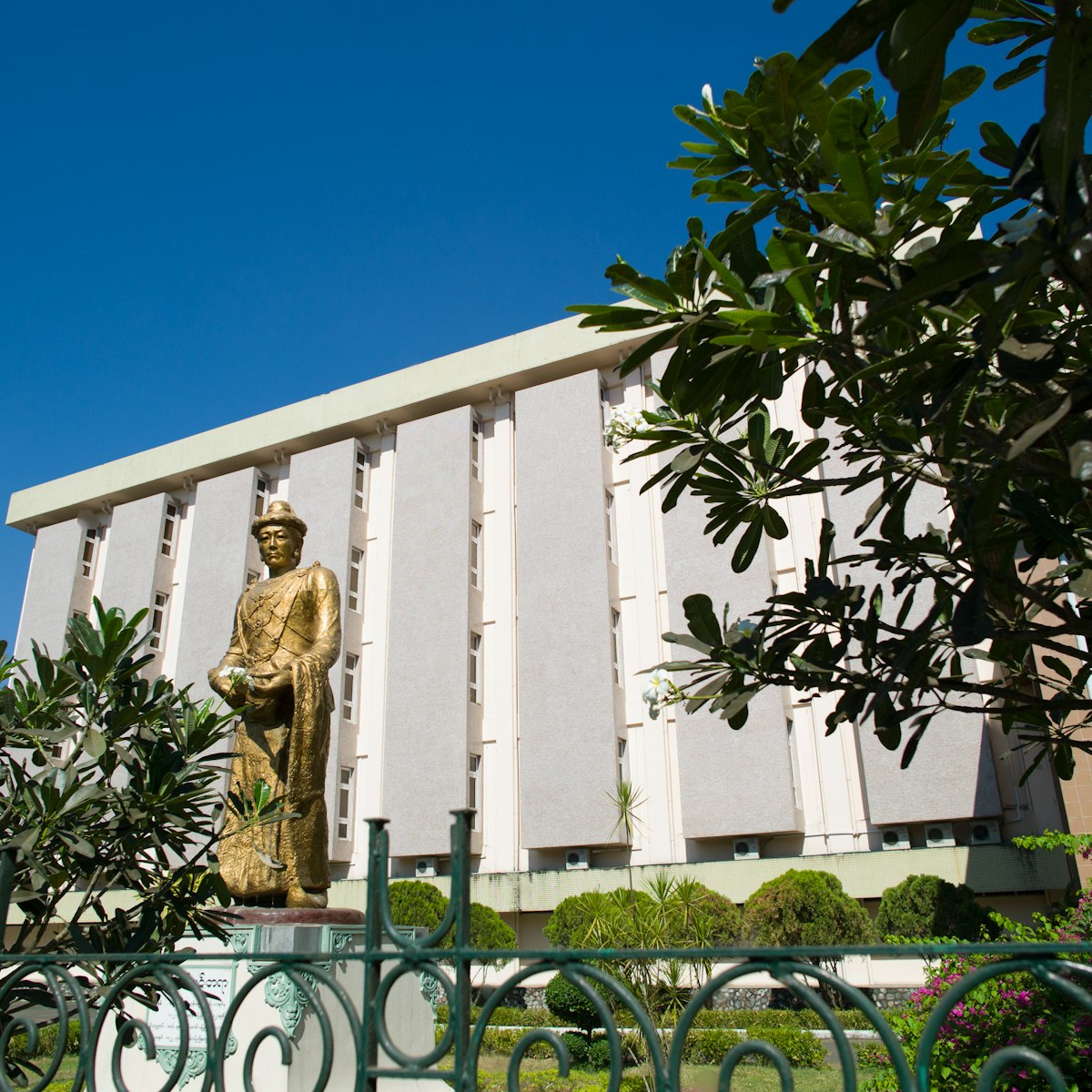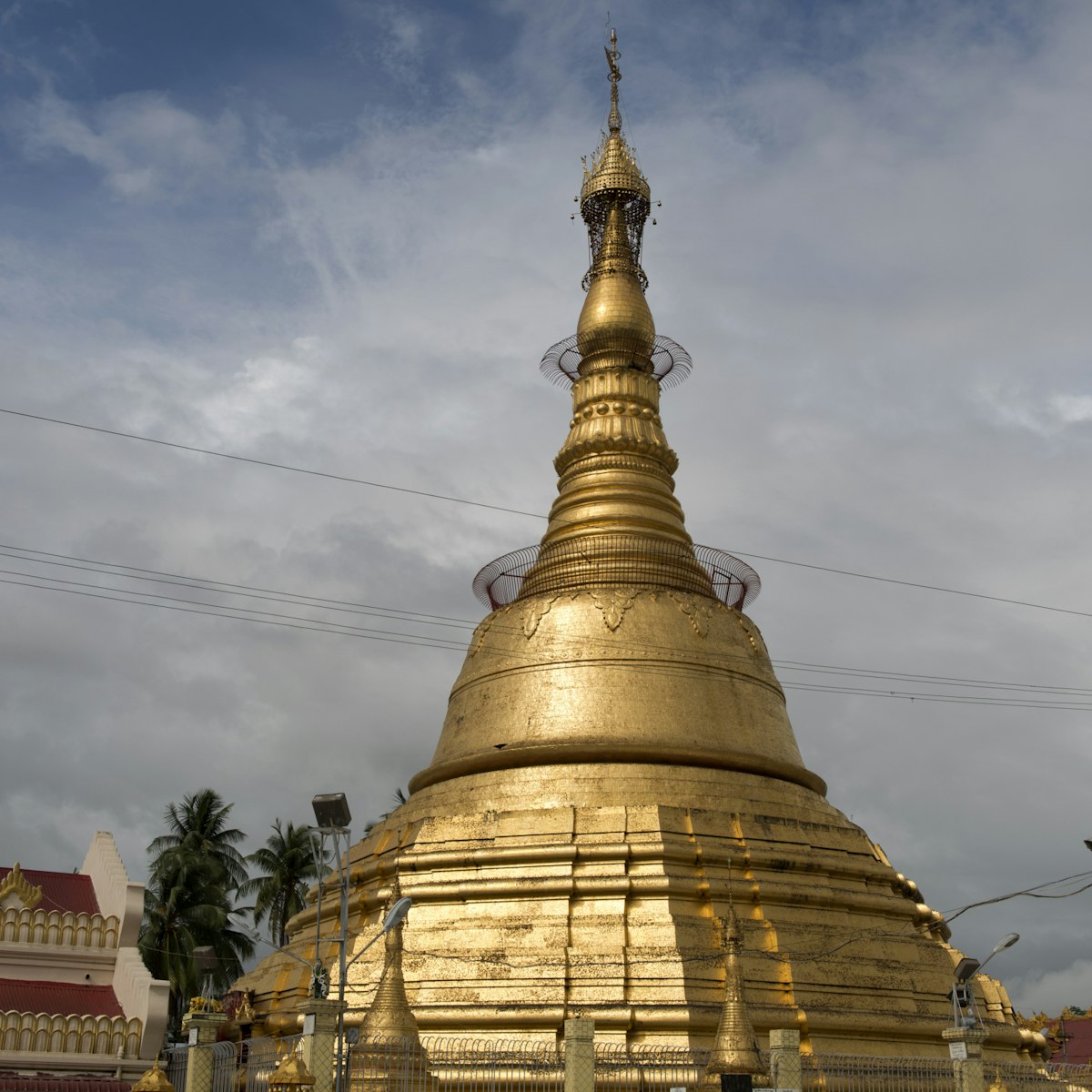Not many cities have a primary traffic circle occupied by a 2200-year-old golden temple. This 46m zedi (stupa), said to be older than Shwedagon Paya, is an example of modern Asian business life melding with ancient Burmese tradition. The gilded zedi is unusual in that its octagonal shape continues right up to the bell and inverted bowl.
Just after the sun has gone down is the most atmospheric time to visit the temple.
The central stupa’s name, Kyaik Athok, translates in the Mon language as ‘the stupa where a Sacred Hair Relic is enshrined’. As with many other ancient Myanmar shrines, it has been rebuilt and repaired many times over the centuries.
Near the north entrance look for the small golden karaweik (royal barge designed in the shape of a mythical bird), which you can load with a prayer card, then winch up a chain in order to deposit the card in a shrine higher up the stupa (K1000).
The exterior base of the temple is surrounded by small shops and all the nonreligious activities that seem to be part of every zedi in Myanmar.
Besides its significance as a landmark and meeting place, maybe its most mundane function is as the point from which all addresses to the north are measured.







